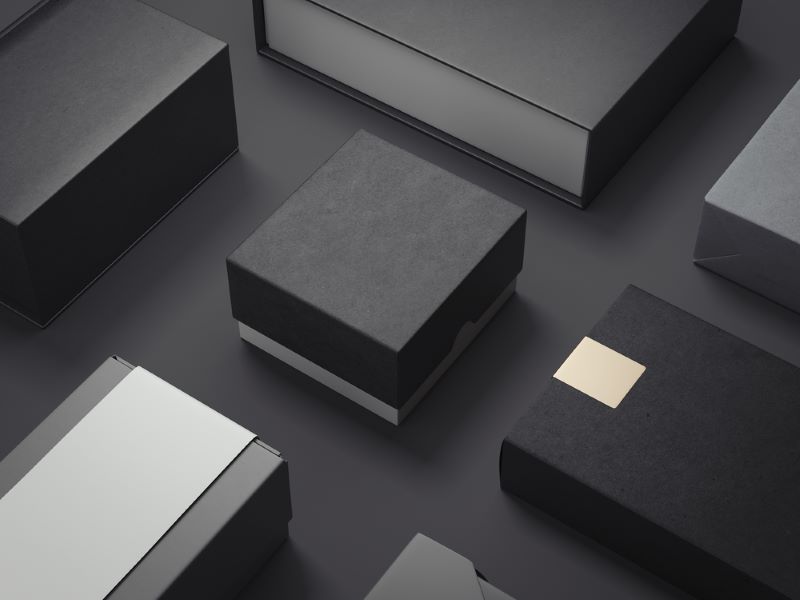Click here to get this post in PDF
According to research, cardboard packaging makes up to 30% of the industry because these boxes and packaging options have grown in popularity. For instance, slotted containers have become the most used type of shipping and storage boxes. On the other hand, corrugated carton boxes, are known for their eco-friendliness, durability, and lower costs. But again, not every packaging box is made equal.
This is because there are multiple boxes and packaging options with different thicknesses, strengths, and chemical resistance. All this information has to be considered when you want to choose cosmetic shipping boxes or corrugated boxes for the product packaging needs. The construction and strength of cardboard can influence the weight capacity of the box because a weak box will result in collapsing and puncturing.
In addition, if you need to buy more boxes, you need to pay extra charges and can even increase the ecological footprint or add to the environmental landfill. While you are buying the boxes, you need to know how much they can hold against the external factors to ensure you are making a wise decision. For this purpose, we are sharing multiple testing procedures that can help you determine the strength of a box. So, are you ready to check out more about these testing methods?
Bursting Strength Test
With the bursting strength test, the strength is checked by applying pressure and it can help determine the precise weight capacity of the box even with rough handling. With this test, the toughness of the wall will be checked when the pressure or force is applied to them. For this purpose, the rubber diaphragm is utilized for applying pressure on the box’s walls until it collapses or bursts down. In addition, the diaphragm is expanded with the implication of Approved Hydraulics. With the expansion of the diaphragm, the board will start bursting under the pressure. The strength is measured in kg/per square centimeter.
Edge Crush Test
Edge crush test is known for testing the stacking strength, quality of material, and shipping endurance of the pallet. With this test, the corrugated board is crushed in cross-direction and has become one of the most popular methods of determining the strength of corrugated material. It’s essential to note down that every wall of the box is made with sheets and all these sheets have three or more than three layers. In the majority of cases, the ridged and grooved sheet is pressed between flat sheets which increases the overall strength of the box.
That being said, the corrugated box has the capacity to withstand excessive force from one side and the edge crush test can check this strength. With this test, the force can be applied to one side that’s perpendicular to the ridges of the box until it collapses or gets crushed. In addition, the ring is cut out from the carton box that has to be tested and excessive force is implemented on one side of the box. The results are measured and showed as ECT which provides an accurate idea about the strength of the box whenever they are shipped and stacked after pallets.
Not to forget, ECT-rated boxes are designed with lesser material as compared to a box tested through the burst test-rated box. That being said, these boxes will produce less waste and has a reasonable price tag if you’ve to buy the boxes in bulk. However, the strength will vary with the sheet, so you need to understand which corrugation is being used.
Gluing’s Water Resistance
As the name suggests, this text will help check the water resistance of the corrugated board’s glue lines and it is done to determine the impact of weather, water absorption, and permeability of the moisture. Sure, the fiberboard can retain water after absorbing it but it’s still important to determine the resistance of sealing or gluing. In case you are considering what happens in the test, the board will be immersed in water and it ensures that the glue lines are exposed to calculate the water absorption and strength.
Cobb Sizing Tester
Cobb sizing tester is responsible for measuring the weight increase and calculating the water-resistance when the board is exposed to water. To illustrate, it can test the box quality as well as the porosity. It’s needless to say that the raw material used for manufacturing the corrugated boxes has the capacity to absorb and retain water. In simpler words, this test will determine the degree of water absorption. Also, with this test, the sheets are exposed to water and the water is oozed out through pressure. As a result, the cobb value will be calculated. Keep in mind that lower cobb value promises higher water resistance and its certification is needed for packing hazardous products.
Paper Grammage & Thickness
This test is known for testing the areal thickness and density and it can test the rigidity and quality of the box. Keep in mind that thickness and grammage are two essential factors of corrugated packaging and can determine the overall quality of the packaging. Also, if you are considering the best thickness or grammage, there is none because it all depends on your packaging requirements. For instance, if your products need padding, more thickness is needed and such boxes will have more flutes and will be able to pack more air. On the other hand, the thin boards are known for higher grammage and are suitable when you need rigid and compact packaging.
Puncture Resistance
The puncture resistance test is known for testing the resistance done by solid and sharp objects. It is a suitable test for testing the sturdiness and strength of the cardboard during shipping and transportation. This test can determine how much impact can be handled by the box. For the most part, this test is suitable for measuring the sturdiness and strength of triangular and pyramid-shaped boxes. Not to forget, the ISO standards for these boxes include ISO 3036 and FEFCO 5. All in all, all the boxes and packaging available at WeCustomBoxes are tested for durability and strength.
You may also like:
Vision for Perfection: The Importance of Visual Inspections in High-Stakes Industries
A Guide to Better Business Packaging
Image source: Depositphotos.com

